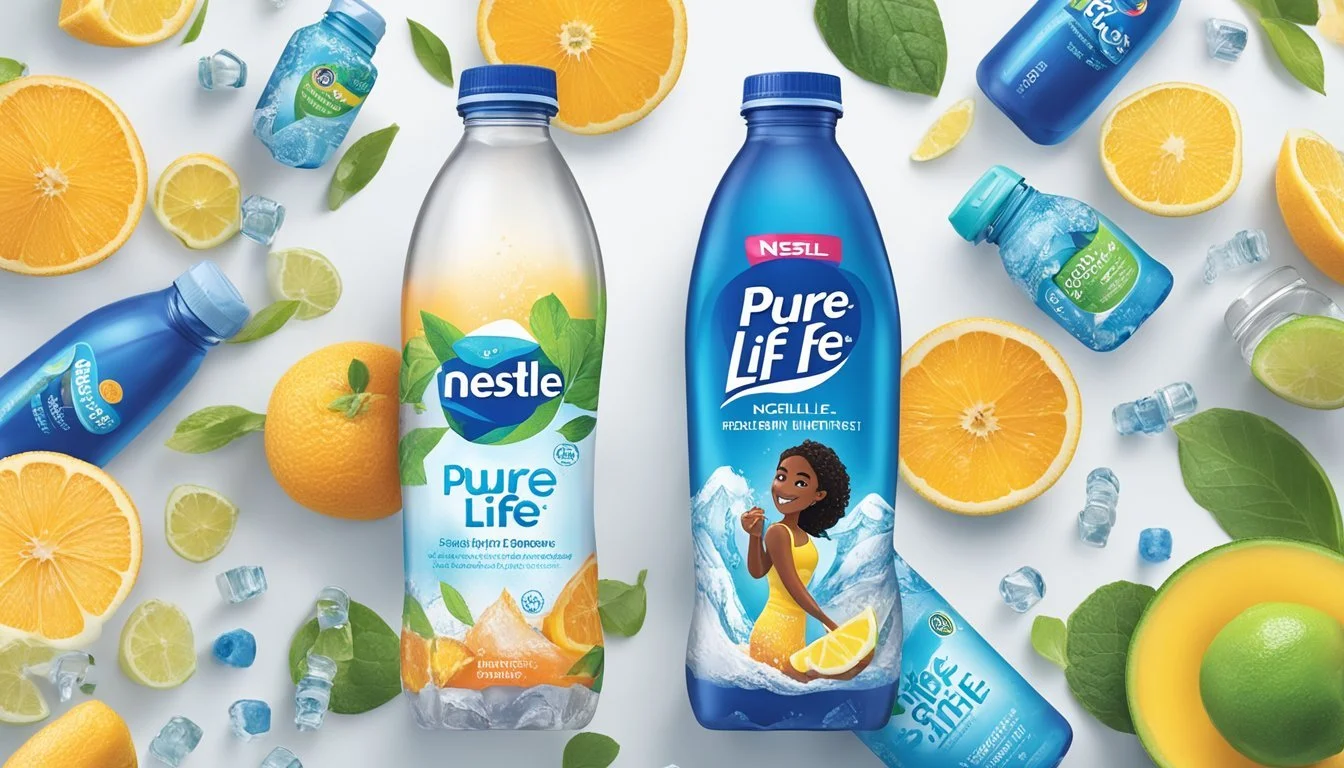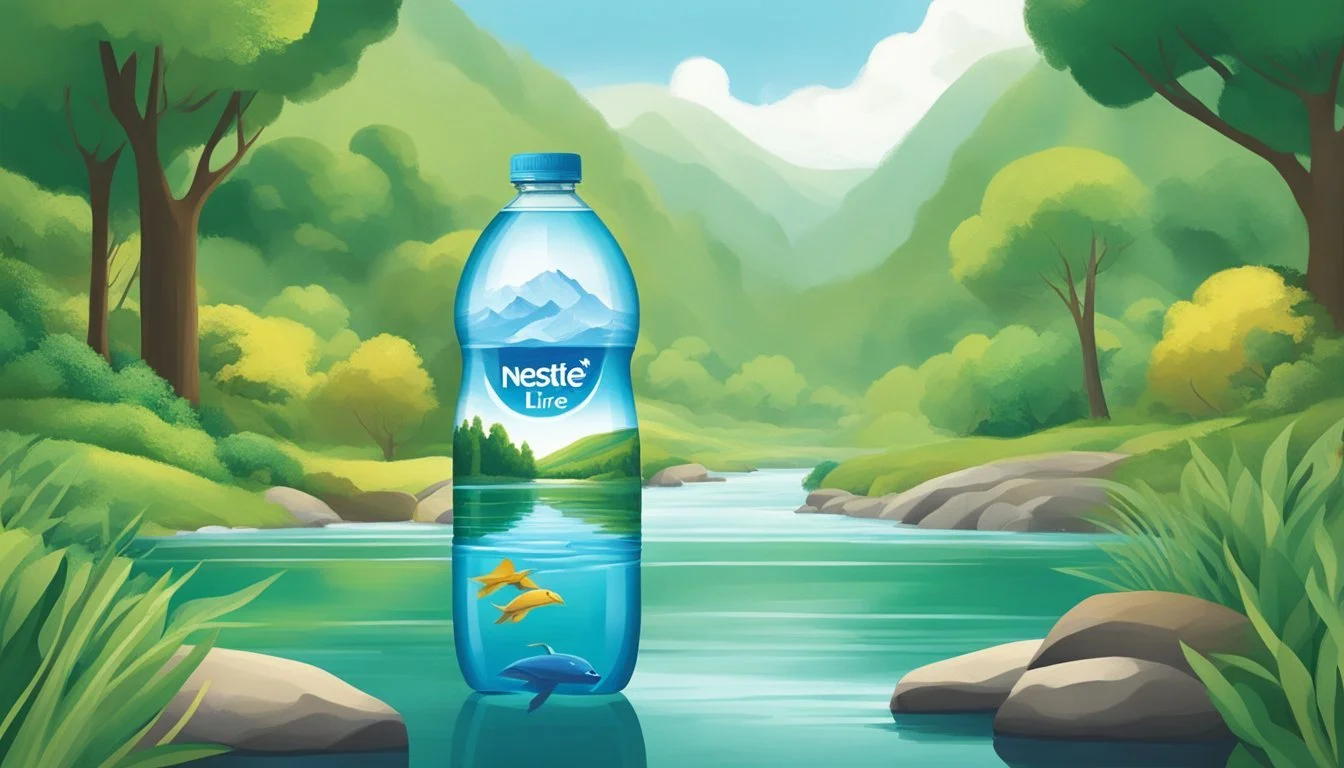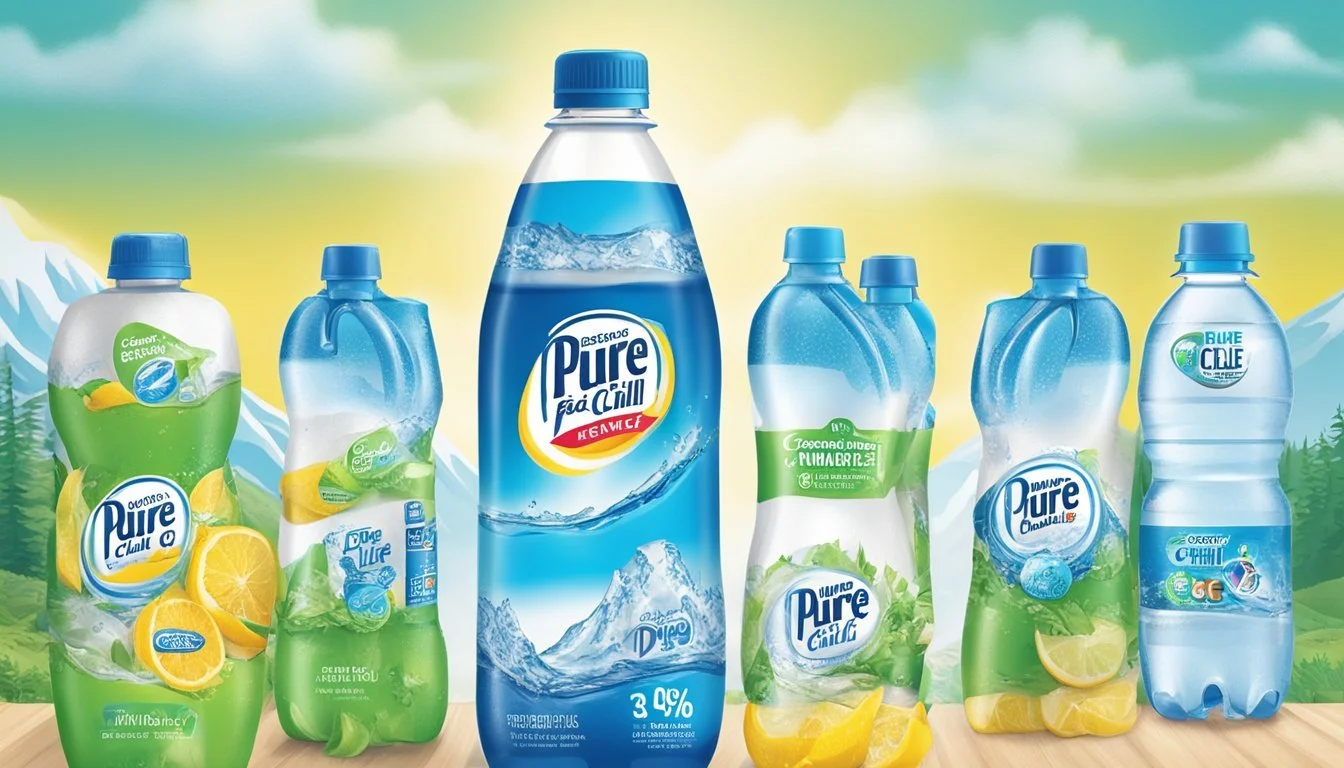Nestle Pure Life vs. Big Chill
A Comprehensive Bottled Water Comparison
When it comes to choosing between Nestlé Pure Life and Big Chill bottled water, consumers often look to factors like taste, sourcing, and health benefits. Nestlé Pure Life, known for its extensive distribution and trusted brand name, has become a staple in many households. Big Chill, though less well-known, promises a refreshing experience with its crisp and clean flavor profile.
In terms of taste, Big Chill may have a slight edge over Nestlé Pure Life. Many water enthusiasts appreciate the nuanced, clean finish of Big Chill, which could be seen as superior to the neutral but sometimes plasticky taste of Nestlé Pure Life. This taste difference can be pivotal for those who are particular about the pure and refreshing qualities of their bottled water.
Sourcing and processing methods also play a crucial role in quality. While Nestlé Pure Life is produced by one of the largest bottled water corporations in the world, ensuring stringent quality control, Big Chill boasts of using natural spring sources. This could mean fewer additives and a more natural product, appealing to those inclined towards purity in their drinking water.
Overview of Nestlé Pure Life and Big Chill
Nestlé Pure Life and Big Chill are prominent names in the bottled water market, and each brand has its unique attributes and product offerings that cater to specific consumer needs.
Brand Histories
Nestlé Pure Life is a globally recognized brand under the Nestlé corporation, one of the largest food and beverage companies in the world. Launched in 1998, it quickly gained prominence due to its wide availability and consistent quality. The brand focuses on providing purified water with added minerals for taste.
Big Chill is a regional brand with a strong following in specific markets. It sources its water from natural springs, emphasizing purity and freshness. While not as internationally known as Nestlé Pure Life, Big Chill has built a reputation for high-quality spring water and local sourcing practices, appealing to environmentally conscious consumers.
Product Range
The Nestlé Pure Life product range includes various sizes of bottled water, from single-use bottles to larger multipack options. They offer purified water with added minerals and maintain stringent quality standards. The aim is to provide hydration solutions that are both accessible and reliable, making them a popular choice in both retail and wholesale markets.
Big Chill focuses on spring water, available in different bottle sizes and sometimes offering variations like lightly flavored options. The brand places a strong emphasis on the natural quality of its water, sourced from natural springs without additional processing. This approach appeals to those seeking a more "natural" hydration option.
The distinct differences in sourcing and product offerings between these two brands highlight the diverse preferences in the bottled water market.
Source and Quality of Water
Key factors to consider in comparing Nestlé Pure Life and Big Chill bottled water include the sourcing practices and the filtration and purification processes they employ.
Sourcing Practices
Nestlé Pure Life sources its water from a combination of municipal supplies, springs, and wells. This means it uses various urban sources, natural springs, and deep underground wells, ensuring a consistent supply.
Big Chill is known for sourcing its water primarily from natural springs. This contributes to its reputation for maintaining the natural mineral content that some consumers prefer for both health benefits and taste.
Both brands aim to provide high-quality hydration options but vary significantly in their approach to water sourcing.
Filtration and Purification Processes
Nestlé Pure Life employs a robust filtration system, including reverse osmosis, which removes impurities and ensures the water is purified. This process involves pushing water through a semipermeable membrane to eliminate contaminants and minerals, thus producing purified water with controlled mineral content.
Big Chill utilizes natural filtration processes that include sedimentation and carbon filtering, maintaining essential minerals while removing impurities. The natural springs provide an intrinsic filtration system that retains beneficial minerals while ensuring quality water without additional chemical treatment.
Consumers choosing between these brands should consider these different approaches to filtration and purification to decide which aligns better with their hydration preferences and needs.
Health and Hydration Benefits
Both Nestlé Pure Life and Big Chill provide essential hydration and contain various beneficial minerals and electrolytes, contributing to overall health and wellness.
Hydration and Body
Hydration is key for maintaining bodily functions. Nestlé Pure Life undergoes multiple-stage filtration, ensuring clean drinking water free from contaminants.
Big Chill water, generally sourced from natural springs, offers a refreshing taste due to its stringent purification processes. Both brands are effective in maintaining hydration levels, critical for metabolism, temperature regulation, and nutrient transportation.
Proper hydration aids in clear skin, efficient digestion, and optimal muscle and joint function. Consuming adequate water from reliable sources like these encourages overall vitality.
Minerals and Electrolytes Content
Both brands contain essential minerals and electrolytes that support various bodily functions. Nestlé Pure Life, through its filtration process, retains some vital minerals such as calcium and magnesium.
Big Chill, sourced from natural springs, often contains naturally occurring electrolytes like potassium and sodium, beneficial for nerve function and muscle health.
Electrolytes help balance the body's pH levels, prevent dehydration, and enhance physical performance. This makes both Nestlé Pure Life and Big Chill valuable choices for those seeking to maintain balanced hydration and overall well-being through mineral-rich bottled water.
Taste Profile Comparisons
In comparing Nestlé Pure Life and Big Chill, key distinctions in flavor and aftertaste reveal unique insights into each brand's water profile. Ingredients such as minerals and sourcing methods significantly impact these characteristics.
Flavor
The flavor profile of Nestlé Pure Life is often described as neutral and balanced. This purified water undergoes a multi-step filtration process, ensuring it is free from impurities and contaminants. The added minerals, such as magnesium sulfate and calcium chloride, subtly influence the taste without being overwhelming. As a result, Nestlé Pure Life provides a consistently clean and crisp experience.
Big Chill, on the other hand, sources its water from natural springs. This spring water retains a natural mineral composition that may vary slightly by batch, giving it a more natural and robust flavor. Some consumers appreciate the inherent mineral presence, which can offer a hint of earthiness and complexity. These natural minerals contribute to a taste that many find refreshing and reminiscent of natural water sources.
Aftertaste
Aftertaste is a critical factor when evaluating bottled water, affecting overall satisfaction. Nestlé Pure Life's aftertaste is notably minimal, thanks to its comprehensive purification process. The added minerals ensure the water feels smooth and leaves little to no residual taste, making it an appealing choice for those who prefer a clean finish.
Big Chill's aftertaste is influenced by its natural mineral content. The presence of naturally occurring minerals may leave a slight, yet pleasant, lingering taste. This aftertaste can enhance the drinking experience for those who enjoy the nuances brought about by natural spring water. Some users may detect subtle mineral notes that offer a sense of authenticity and connection to the natural source.
In conclusion, these differences in flavor and aftertaste can significantly affect personal preference, making it essential to consider what tastes align best with individual preferences.
Environmental Impact and Sustainability
Companies must consider their environmental impact and sustainability practices when producing bottled water. Factors such as packaging choices and recycling policies play a significant role in determining a brand's eco-friendliness.
Packaging Choices
Nestlé Pure Life and Big Chill use plastic bottles for packaging, but their approaches differ.
Nestlé Pure Life employs PET plastic, which is light and recyclable. It requires less than 2.5 liters of water to produce one liter of product.
Big Chill uses BPA-free plastic, emphasizing consumer health and environmental safety. Both brands are attempting to reduce their environmental footprint by exploring eco-friendly materials and minimizing plastic use. However, a critical focus remains on the effectiveness of their initiatives and consumer participation in recycling efforts.
Recycling and Environmental Policies
Nestlé Pure Life participates actively in developing a circular economy for recycling. They collaborate with other companies, public authorities, and NGOs to improve recycling rates.
Given their significant market presence, Nestlé's efforts include educational campaigns to encourage recycling habits.
Big Chill, while smaller, focuses on sustainability by promoting the return and recycling of their bottles. They provide detailed information on their environmental policies, aiming to be transparent about their environmental footprint.
Both brands recognize the need for better recycling systems to reduce plastic waste and enhance the sustainability of their products.
Safety and Contaminant Analysis
When comparing Nestlé Pure Life and Big Chill bottled waters, safety and contaminants are crucial aspects. Both brands undergo rigorous testing to meet safety standards.
Nestlé Pure Life’s Water Analysis Report indicates that many substances were not detected at or above the minimum reporting level (MRL), including heavy metals like lead and arsenic. This suggests strong compliance with federal and state regulations.
Big Chill, on the other hand, also adheres to these safety regulations. Independent tests have shown acceptable levels of various contaminants but comprehensive publicly available reports are less common.
Consumer Reports has identified PFAS chemicals in many bottled water brands, including well-known names. These chemicals can pose health risks if present in high quantities. It's important to note if and how these brands address PFAS contamination.
A study mentioned that 93% of bottled water tested contained microplastics, which raises a concern for both brands. Microplastics have been detected across many bottles, but the quantities can vary significantly even within the same brand.
Another concern is BPA (Bisphenol A), commonly found in some plastic bottles. Both brands state that their bottles are BPA-free, aiming to minimize any potential health risks associated with BPA leaching into the water.
Here’s a simplified comparison:
Contaminant Nestlé Pure Life Big Chill Lead Not detected at MRL Compliance unknown Arsenic Not detected at MRL Compliance unknown PFAS Addressed* Addressed* Microplastics Present Present BPA BPA-free BPA-free
* Based on brand communication, further detail might be required.
Cost and Consumer Preferences
Nestlé Pure Life and Big Chill offer distinct advantages in terms of cost and brand loyalty. Price competitiveness and consumer trust play vital roles in determining the preference for these bottled water brands.
Price Point
Consumers consistently find Nestlé Pure Life to be priced affordably. This makes it a popular choice in the budget-friendly segment. Available in various sizes, Nestlé Pure Life often offers bulk purchasing options, appealing to large households and office settings.
Big Chill is positioned similarly in the market but occasionally comes in at a slightly higher price point. This difference might be due to regional pricing strategies or distribution costs. Promotional discounts and special offers frequently influence the purchasing decisions between these two brands.
Consumer Loyalty
Nestlé Pure Life enjoys a strong consumer base due to its long-standing presence in the market. Loyalists appreciate its consistent taste and quality, fostering trust over the years. Various consumer surveys indicate a high satisfaction rate, attributing to its substantial market share.
Big Chill, while not as widely recognized, builds loyalty through unique regional marketing campaigns and local sponsorships. Consumers often choose it for its local appeal and reliability. Customer reviews highlight satisfaction with taste and purity, helping to establish a loyal following despite its smaller market footprint.
This detailed comparison, focusing on cost and consumer loyalty, sheds light on why these brands maintain their respective positions in a competitive bottled water market.
Availability and Global Market Presence
Nestlé Pure Life and Big Chill are significant players in the bottled water industry, each with distinct levels of availability and market presence.
Regional Availability
Nestlé Pure Life is widely available across different regions, including North America, Europe, and Asia. In the United States, it is commonly found in supermarkets, convenience stores, and vending machines. Their robust distribution network ensures easy access for consumers. In contrast, Big Chill is predominantly available in select markets, often focused on high-demand areas and major urban centers in regions such as North America and Europe.
International Reach
Nestlé Pure Life benefits from Nestlé Waters' extensive global network, making it a prominent brand on the international stage. It is sold in more than 40 countries, with significant market penetration in the Middle East, South America, and Africa. Meanwhile, Big Chill has a more limited international presence, primarily focusing on North American and select European and Asian markets. While it continues to expand strategically, its international reach remains less extensive compared to Nestlé Pure Life.
Certifications and Industry Standards
When choosing between Nestlé Pure Life and Big Chill, understanding their adherence to certifications and industry standards can provide key insights into the quality and safety of these bottled waters. Both brands claim compliance with various quality and regulatory standards, which are crucial for ensuring consumer trust and product reliability.
Quality Certifications
Nestlé Pure Life holds several certifications that vouch for its quality. The brand is certified by the International Bottled Water Association (IBWA), which imposes rigorous standards on its members. Additionally, Nestlé Pure Life adheres to ISO 22000 standards, an international benchmark for food safety management.
Big Chill also maintains high-quality standards, being a member of the IBWA. It often undergoes testing to ensure it meets or exceeds these guidelines. While it may not have as many certifications as Nestlé Pure Life, the adherence to IBWA standards indicates a commitment to maintaining quality and safety.
Regulatory Compliance
Nestlé Pure Life complies with various regulatory bodies. In the United States, it meets the standards set by the Food and Drug Administration (FDA) for bottled water. Transparency is a significant aspect of this compliance, with Nestlé providing detailed information about water sources and purification processes on their website.
Big Chill similarly complies with FDA regulations and often meets state-specific standards that may be more stringent. Additionally, it ensures transparency by providing information on water sources and purification methods. This level of compliance and transparency is essential for maintaining consumer trust and ensuring the safety of the product.
More About Nestle Pure Life
Acqua Panna vs Nestle Pure Life: Which Bottled Water is Better?
Aquafina vs Nestle Pure Life: Which Bottled Water is Better?
Arrowhead vs Nestle Pure Life: Which Bottled Water is Better?
Boxed Water vs Nestle Pure Life: Which Bottled Water is Better?
Core Hydration vs Nestle Pure Life: Which Bottled Water is Better?
Deer Park vs Nestle Pure Life: Which Bottled Water is Better?
Essentia vs Nestle Pure Life: Which Bottled Water is Better?
Ice Mountain vs Nestle Pure Life: Which Bottled Water is Better?
Icelandic Glacial vs Nestle Pure Life: Which Bottled Water is Better?
Just Water vs Nestle Pure Life: Which Bottled Water is Better?
Mountain Valley Spring Water vs Nestle Pure Life: Which Bottled Water is Better?
Nestle Pure Life vs 1907water: Which Bottled Water is Better?
Nestle Pure Life vs 7-Select: Which Bottled Water is Better?
Nestle Pure Life vs Alkaline88: Which Bottled Water is Better?
Nestle Pure Life vs Antipodes: Which Bottled Water is Better?
Nestle Pure Life vs Aqua Carpatica: Which Bottled Water is Better?
Nestle Pure Life vs BodyArmor: Which Bottled Water is Better?
Nestle Pure Life vs Cascade Mountain: Which Bottled Water is Better?
Nestle Pure Life vs Castle Rock: Which Bottled Water is Better?
Nestle Pure Life vs CBD Living: Which Bottled Water is Better?
Nestle Pure Life vs Crystal Geyser: Which Bottled Water is Better?
Nestle Pure Life vs Crystal Lake: Which Bottled Water is Better?
Nestle Pure Life vs Essence pH10: Which Bottled Water is Better?
Nestle Pure Life vs Hawaii Volcanic: Which Bottled Water is Better?
Nestle Pure Life vs Hawaiian Springs: Which Bottled Water is Better?
Nestle Pure Life vs Kirkland Signature: Which Bottled Water is Better?
Nestle Pure Life vs Liquid Death: Which Bottled Water is Better?
Nestle Pure Life vs Mananalu: Which Bottled Water is Better?
Nestle Pure Life vs Open Water: Which Bottled Water is Better?
Nestle Pure Life vs Poland Spring: Which Bottled Water is Better?
Nestle Pure Life vs Proud Source: Which Bottled Water is Better?
Nestle Pure Life vs Pure Life: Which Bottled Water is Better?
Nestle Pure Life vs Purely Sedona: Which Bottled Water is Better?
Nestle Pure Life vs Refreshe: Which Bottled Water is Better?
Nestle Pure Life vs Richard's Rainwater: Which Bottled Water is Better?
Nestle Pure Life vs San Pellegrino: Which Bottled Water is Better?
Nestle Pure Life vs Simple Truth: Which Bottled Water is Better?
Nestle Pure Life vs Smartwater: Which Bottled Water is Better?
Nestle Pure Life vs Solan de Cabras: Which Bottled Water is Better?
Nestle Pure Life vs Talking Rain AQA: Which Bottled Water is Better?
Nestle Pure Life vs The Well: Which Bottled Water is Better?
Nestle Pure Life vs Topo Chico: Which Bottled Water is Better?
Nestle Pure Life vs Tru Alka: Which Bottled Water is Better?
Nestle Pure Life vs Weird Water: Which Bottled Water is Better?
Nestle Pure Life vs Whole Foods 365: Which Bottled Water is Better?
Nestle Pure Life vs Whole Foods Italian Still Mineral water: Which Bottled Water is Better?
Nestle Pure Life vs Zephyrhills: Which Bottled Water is Better?
More About Big Chill
Big Chill vs Kirkland Signature: Which Bottled Water is Better?
Big Chill vs Talking Rain AQA: Which Bottled Water is Better?
Big Chill vs Whole Foods 365: Which Bottled Water is Better?
Cascade Mountain vs Big Chill: Which Bottled Water is Better?
Hawaii Volcanic vs Big Chill: Which Bottled Water is Better?
Hawaiian Springs vs Big Chill: Which Bottled Water is Better?
Icelandic Glacial vs Big Chill: Which Bottled Water is Better?
Mountain Valley Spring Water vs Big Chill: Which Bottled Water is Better?
Richard's Rainwater vs Big Chill: Which Bottled Water is Better?
Solan de Cabras vs Big Chill: Which Bottled Water is Better?
Whole Foods Italian Still Mineral water vs Big Chill: Which Bottled Water is Better?








